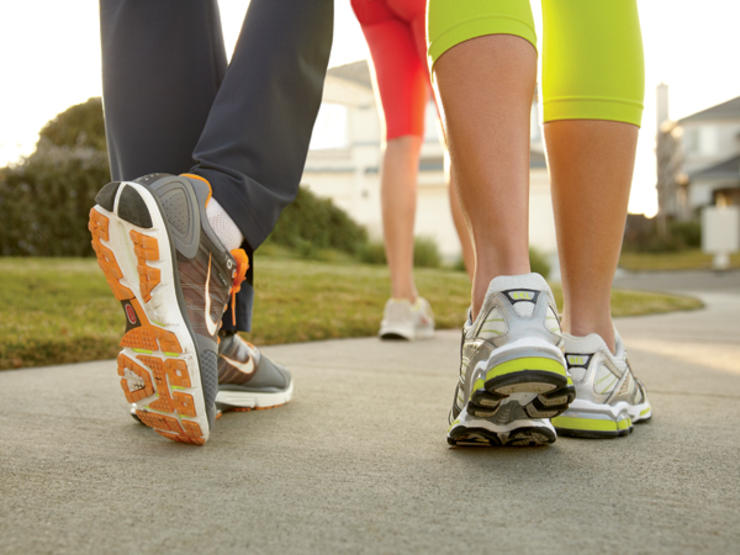If you have a smart phone, a FitBit or similar device, chances are you have a fitness app that measures your steps per day. If you’re a fairly healthy adult, your fitness app probably will set a goal of 10,000 steps per day, or about five miles a day.
Now, here’s the thing: There’s no real scientific reason as to why 10,000 steps is a healthy goal. Sure, we live in a fairly sedentary world these days. Many of us have desk jobs that can make getting in even 2,000 steps (or 1 mile) a challenge. And there’s no doubt that getting in 10,000 steps a day should be beneficial.
But if you’re looking to achieve a step goal that has some proven benefit for your body, then consider trying to hit the 6,000-step mark. According to a 2014 study published in the journal Arthritis Care & Research, walking 6,000 steps a day on average can have great benefits for people with knee arthritis, or those who are at risk of getting knee arthritis.
The observational study, funded by the National Institutes of Health, examined walking patterns for nearly 2,000 people in their 60s. They were equipped with accelerometers – similar to a FitBit – for a week in 2009 and 2011. Two years later, the same group went through the same exercise, once again walking around for a week with accelerometers.
Researchers found that people who walked 6,000 steps a day on average were less likely to have problems standing, walking and climbing stairs two years later. Every 1,000 steps that a person added to their day’s step routine reduced their risk of mobility loss by 16 to 18 percent.
Walking delivers lots of other benefits, including reducing the risk of heart disease, cancer and depression. But with a growing population of older adults in the United States, a high value is placed on of staying mobile and retaining independence. Arthritis is the nation’s No. 1 cause of disability.
So how do you get in more steps a day to achieve your goal? Here are some simple tips:
• Park farther from the entrance to the store, instead of looking for the closest spot
• Take the stairs at the office. Get off 1 or 2 floors below your floor if you are in a high-rise.
• March in place while brushing your teeth. You might feel a little silly, but remember it’s helping you get to your goal.
• Skip the email: Walk over to your co-worker’s desk and have a chat.
• Make that afternoon meeting a walk around the block
• If you’re on a conference call, consider pacing while you talk. • Make an extra trip through the grocery store up and down a few aisles before you check out.
Remember there’s nothing wrong with trying to make 10,000 steps your daily goal. But for a proven benefit, try to make strides toward the 6,000 mark. Everything after that is gravy.
We’ll see you on the track!
Click here to find the study and its findings.
Dr. Annette “Dr. Z” Zaharoff heads the Non-Surgical Center of Texas, focusing on non-surgical alternatives to relieve pain and repair injuries. A former professional tennis player who competed in the WTC circuit, Dr. Zaharoff remains actively involved with the US Tennis Association. Learn more about her at www.drzmd.com. You can follow her on Facebook at www.Facebook.com/DrZaharoff.

